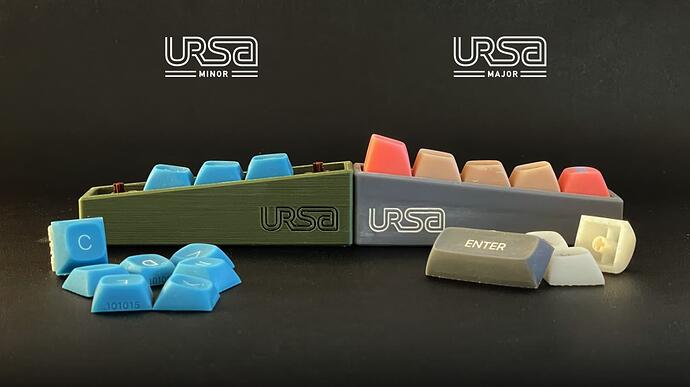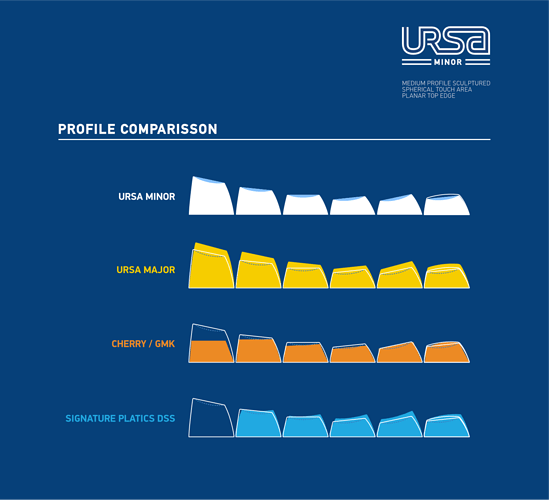UPDATE 2023: URSA is now in production. Please see here:
Thank you all for your continued support ![]()
----- Original Post April 4th, 2022 -----
Hello, it’s been a while since I last posted about a project and only vaguely teased at what I’m working on. Also, Matt3o announced his new profile.
So now is as good a time as ever to share my profile with the World™, too. ![]()
Since I see quite a few similarities between Matt3o’s new profile and mine, I’d rather show my work sooner than later. Also, to emphasize that these profiles came into being independent of each other.
Welcome to Project URSA
HOW IT ALL STARTED
INSPIRATION
Growing up in the crossover between space age to information age, our early days were formed by science fiction of the 70s and home computers of the 80s. Looking back, it feels like there was much more variety which has slowly faded into something more of the same.
Computers from those days inspired us to create a keycap profile that escapes the conformity of industry standards and adds choice to the community.
The spark that ignited this project is Matt3o’s achievement with the MT3 profile. A modern keyset inspired by IBMs Beamspring keyboards.
DESIGN GOAL
Our goal was to design a keycap profile featuring a deep dish spherical touch area with a flat top edge. The dish should feel smooth to the palms yet still create a feeling of being centered. Finger travel from the home row should happen without excessive hand movement. The row sculpt conforms to this goal with bespoke inclinations and step distances. The result should be a smooth and precise typing experience.
RESEARCH AND DEVELOPMENT
Preceding any design phase, a vast amount of images showing spherical keycaps have been accumulated. Discussion on various forums centered around sphericals was read and digested. A big thank you to Chyrosran22 for permission to use his images.
DESIGN AND DEVELOPMENT
The initial design started on paper and quickly found its way into 3D modelling. From there, we progressed into printing prototypes with photopolymer resin. By far the most revisions were made to the dish depth and smoothness in combination with the top edge contour.
This iterative process lends itself to a procedural workflow, which was developed inside SideFX’s Houdini. Hence, it has grown into a system where any change is automatically distributed throughout the whole keycap set.
PROJECT URSA
Why URSA? Living in the Northern Hemisphere, we see the constellation of these stars all year long. Space, as well as Computers, is THE fascination of our upcoming. Also, bears are cool, and the big dipper has a prime number of stars.
INSPIRATION FOR SPHERICAL KEYCAPS
Images courtesy of Chyrosran22
The shaping of the touch area on spherical keycaps is mostly dependent on dish depth and the shape of the top edge. If the top edge is planar/flat, it cannot converge to a truly spherical indentation. Most vintage keycaps have a planar/flat top edge, and the fillet radius of the corners influences the smoothness of the dish. The larger the radius of the fillet, the smoother/more spherical the touch area becomes. In some of the above images, a pyramidical dish is noticeable, this is more pronounced when the top edge’s fillet radius is small and the top edge is visually more rectangular.
For completeness, we would like to mention other spherical profiles such as SA, DSA, MDA which seem truly spherical. This is achieved by displacing the top edge with the sphere that is defining the depth of the touch area. This results in a concave top edge profile and creates peaks at the corners of the touch area.
ROW PROFILE
ROW INCLINE
The row profile was designed for a case incline of 6 degrees. Hence, the home row is level with the surface it rests on. The touch area inclination and distance was refined for short key travel. Cases used in development ranged from 20-25 mm in front height.
ROW STEPPING
In order to minimize collision with keycaps while pressing down keys from upper rows, the row step height was lifted to a minimum of 2 mm for rows 4-1.
ROW ENUMERATION
Although we feel, row numbers should start with the space bar and increase away from the user, we adapt to the established standard.
KEYCAP SCULPT
SPHERICAL DEEP DISH
Meticulous care went into sculpting the dish as deep yet continuous as possible for a smooth touch while still expressing character.
FLAT TOP EDGE
The flat top edge is a bespoke choice. Contrary to other designs, it does not deform to serve the spherical profile of the dish.
CONVEX PROFILE
In the tradition of spherical keycaps the profile features a slight convex shape which underline the curved nature of the profile.
CONVEX MODIFERS
To maximize comfort, Row 5 features convex touch areas for the modifier keys. The front fillet is increased to provide a smoother edge.
TOP EDGE CONTOUR AND DISH SCULPT
The top edge shape is a barrel distorted squircle. It features no parallel lines. The illustration to the left shows a square, circle and a super ellipse with n=3.5 for comparison. After many iterations, we chose the smoother barrel distortion over a squircle to match the smooth feel of the dish.
PROFILE COMPARISSON
KEYCAP TERMINOLOGY
Stay tuned — photos of prototypes coming up next ![]() In the meantime have a peek here.
In the meantime have a peek here.
Thank you for your time and as always have a great day.
Andreas
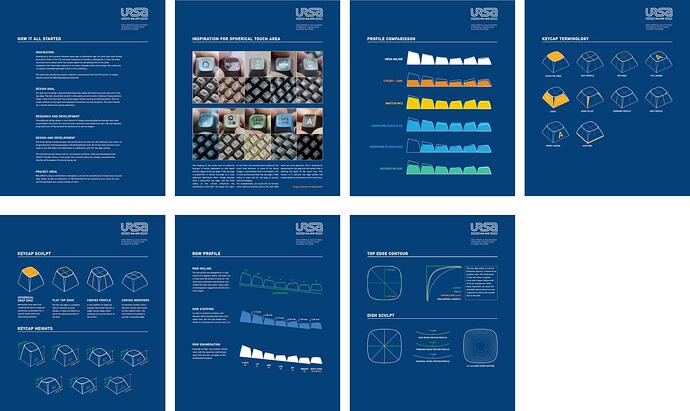
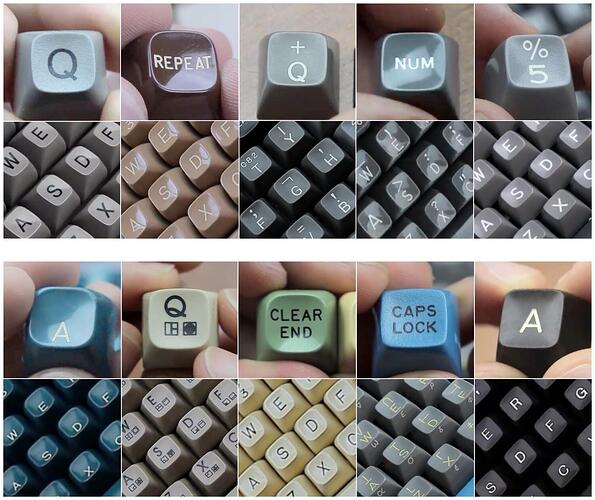
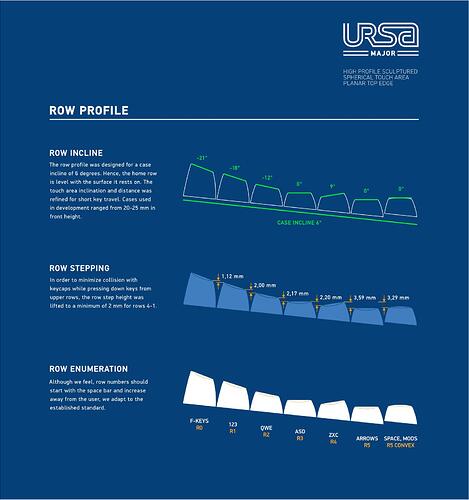
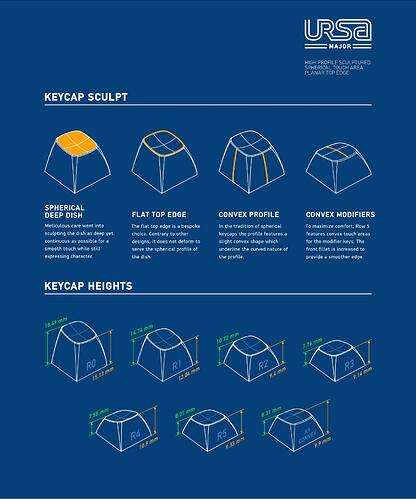
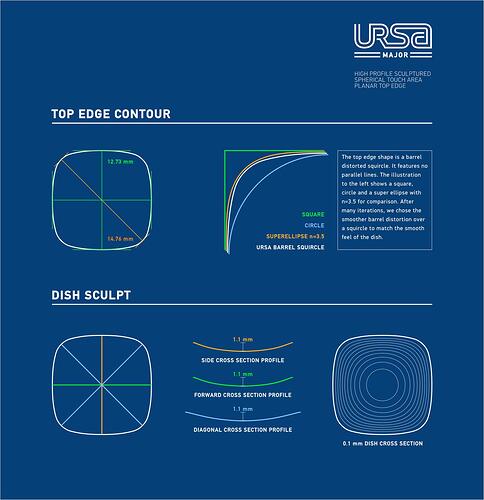
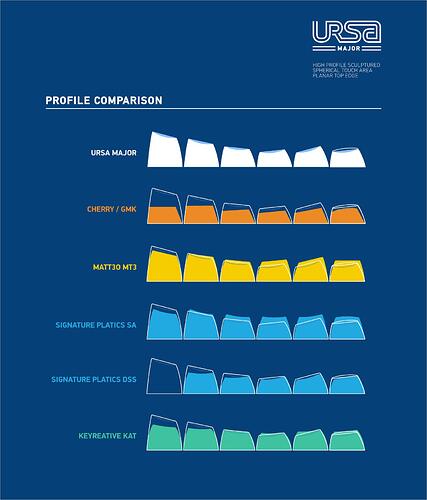
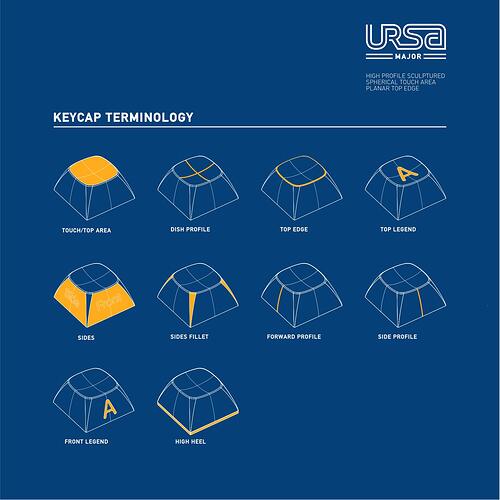

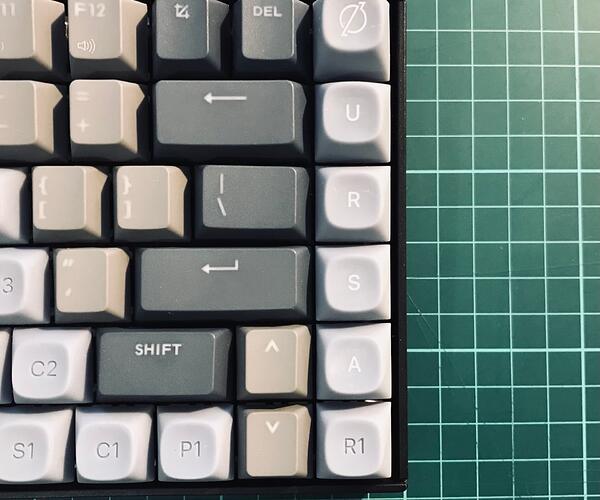
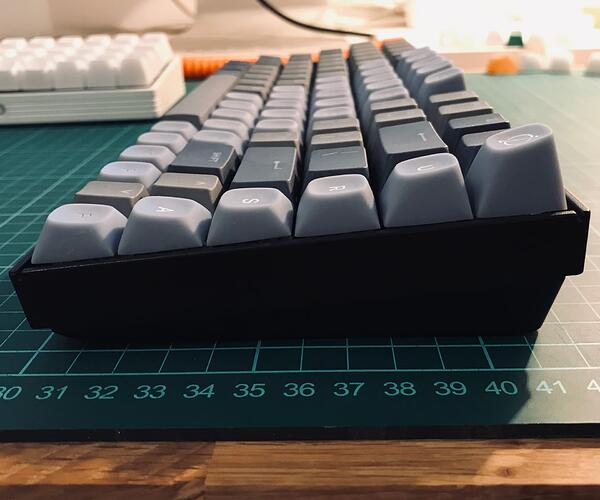
 .
.